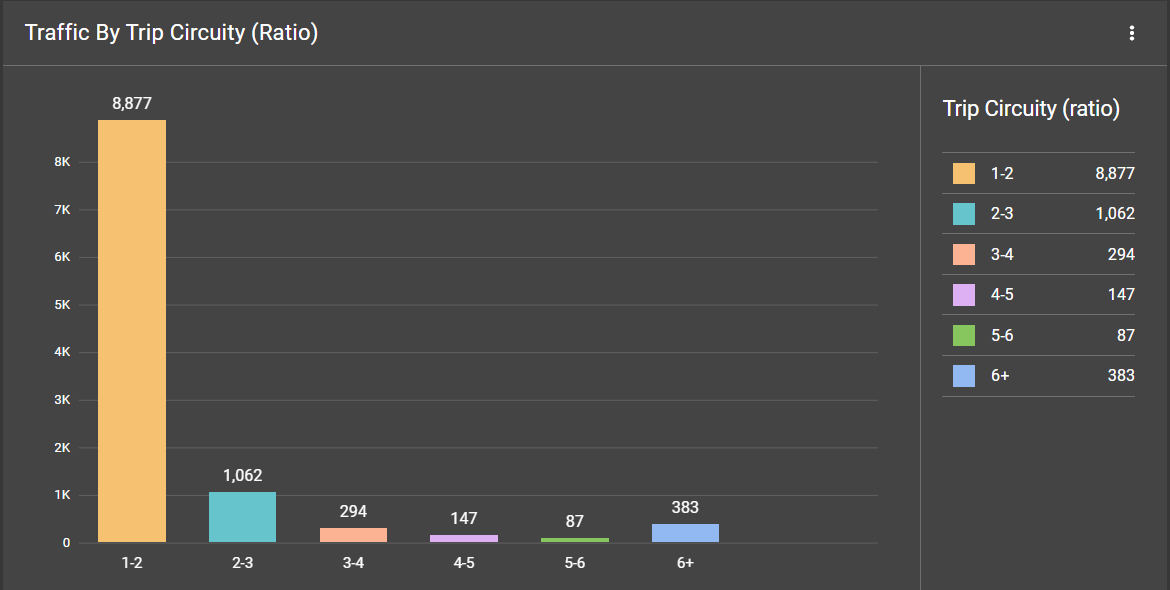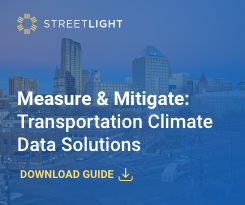
What will it take to build a climate-forward transportation ecosystem?
02 November 2022
From filling EV charging infrastructure gaps to identifying priority bus and rail expansion, data underpins a more sustainable transportation future.
Transportation professionals have a critical role to play in mitigating climate change. Transportation is the leading source of greenhouse gas emissions (GHGs), according to the EPA.
But agencies also must respond to short-term constituent concerns that don’t always align with lowering GHGs.
There are many ways planning agencies may tackle this challenge. All of them start with data.
The Twin Cities takes on GHG measurement
Looking at one example, the Twin Cities’ policymaking body decided that the best way to engage citizens and political leaders in the climate fight was to empower local municipalities with online public tools showing where emissions currently stood and how those emissions were trending.
Initially, the council had calculated emissions solely based on a community’s traffic volume. But this blunt estimate wasn’t actionable for local jurisdictions. For example, it overcounted emissions in small communities that intersected highways.
Instead, the council focused on developing a more precise measure of transportation emissions. Using StreetLight’s Origin-Destination (O-D) analysis tool, the organisation was able to calculate miles travelled from one township to another. In addition, the council used StreetLight to segment miles travelled by personal and commercial vehicles, allowing the organisation to quantify the considerable difference in GHGs produced by commercial vs. personal vehicles. This enabled local jurisdictions to pursue more targeted decarbonisation strategies.

The council made the results publicly available online on the Twin Cities Greenhouse Gas Inventory, allowing citizens and decision makers to use this online tool to better understand emission sources and track how they change over time.
Measuring GHGs is just the beginning
In the case of the Twin Cities, precise data on the sources of transportation-related GHGs was a starting point to mitigation, but far from the endpoint.
Measurement is where jurisdictions must begin. From there, they’re tasked with building the infrastructure that will get more cars and trucks off the road and transition those that remain to electric vehicles (EVs). This is the fundamental path to decarbonising transportation.
The scale of this challenge, though, is enormous. One that, until recently, seemed to face insurmountable funding and legislative challenges.
But in the US the passage of the Bipartisan Infrastructure Law (BIL) and the Inflation Reduction Act have gone a long way toward reducing obstacles. Local governments now have the mandate and funding available to enact transportation reforms that could put the sector on a path toward decarbonisation.
Now the effort falls to execution across a diversity of highly specialised efforts, including:
- Refined, ongoing measurement of GHG emissions
- Reduction in overall vehicle miles travelled (VMT)
- Expansion of public transit access
- Investment in active transportation safety and connectivity
- Implementation of optimised EV charger infrastructure
To know where a high-occupancy vehicle (HOV) lane is best implemented; where short car trips can be converted to alternative modes; where circuitous routes would be better served by transit; and where communities are most underserved by EV charging infrastructure, data is fundamental.

StreetLight’s report Measure & Mitigate: Transportation Climate Data Solutions examines how analytics empower transportation decarbonisation across each of these critical areas, with example analyses and real-world initiatives.
Transportation decarbonisation is no small feat. It begins with localised data to make actionable decisions. The more effective those decisions are, the more likely people will be to choose the alternatives, not just because they’re “cleaner” but because they’re safer, more efficient, and less costly.
Interested in learning more about how analytics underpin transportation decarbonisation? View StreetLight’s Measure & Mitigate: Transportation Climate Data Solutions.
Brought to you by:






